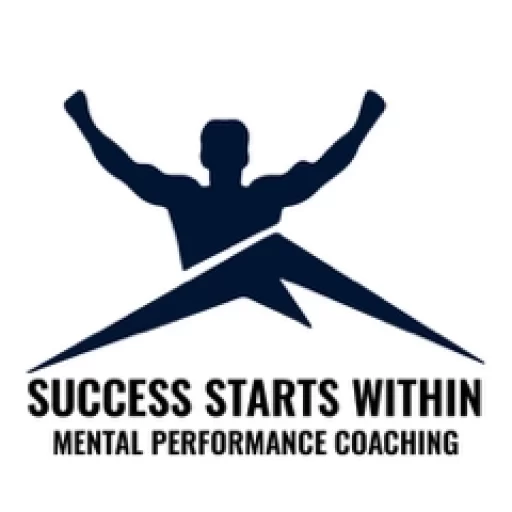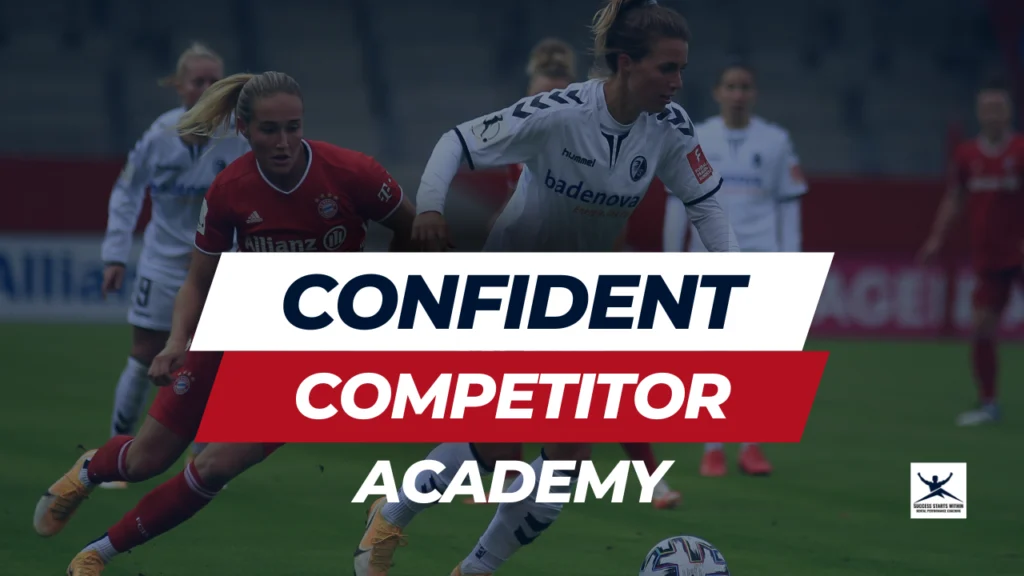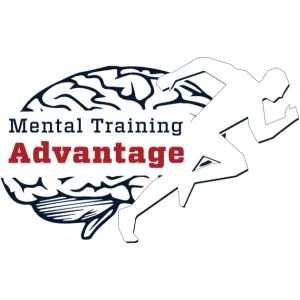Who is it you truly want to be? Now, be honest, how much time have you spent actually thinking about the person you would like to become? It’s an interesting question, really. I think for so many of us, most of our lives are spent without even realizing the importance of this question.
But the truth is, the self-image you currently operate from plays a major role in the success you will achieve in your life, as well as your mindset, the level of happiness you feel, and your overall sense of well-being.
In your day-to-day life, you have two choices as to the self-image you are operating from. You can either be driven by the vision crafted out of past experiences, or the one you’ve crafted that is pushing you towards the person you ultimately want to become.
My question to you is, which self-image is running your life?
Your Current Self-Image
Our self-image is the personal picture or mental image we hold of ourselves. We all have self-images that have become pieced together in our minds, whether consciously or unconsciously.
An interesting aspect of self-image is that it can be directed towards any area of our lives. Meaning, you may hold a certain view of yourself in one area, yet, when it comes to another part of life you’ve adopted a completely different outlook.
When you are aiming to craft an ideal vision of yourself, the self-image that will enable you to aspire to all your goals, you first must examine your current self-image.
As an athlete or performer, there are a few areas that will have the greatest impact on your performance, depending on the self-image you currently hold. These include:
Anxiety
How do you see yourself when I say the word, anxiety? In the past, my mind would have gone straight to all the times I became paralyzed by that unending, stomach-pinching feeling I’ve experienced in the past.
You see, I always viewed myself as an anxious person. I would say things like:
- “I get nervous easily.”
- “I don’t know why I get so anxious before games.”
- “I get very anxious when speaking to other people.”
- “My legs and hands shake when I’m up to bat.”
Now, don’t get me wrong, all of this had been true in the past. But that didn’t mean it had to be true in the future. Yet, that’s how I viewed myself. My self-image in relation to anxiety was that anxiety controlled me, with little to no power being in my hands to change that.
So for yourself, what is your self-image when it comes to anxiety?
Self-Confidence
Do you see yourself as a confident person, one who has the belief and trust in their abilities? An interesting, but simultaneously frustrating aspect of confidence is that you must see yourself as confident in order to become confident.
That can be incredibly difficult if, in the past, all you’ve experienced is situations in which you feel you lack confidence. However, those memories do not have to fuel further feelings of low confidence.
Yet, if right now, that’s how you perceive yourself, there is no other way than for you to continue to lack confidence. So, do you view yourself as someone who has trust in yourself, or do you see yourself as someone always searching for a way to build confidence?
Perfectionism
“Oh, I’m just a perfectionist.”
I can’t tell you how many times I’ve said that same exact statement. Over and over, giving my overly judgmental mind an excuse by stating that’s just the way I am.
My view was that I was a perfectionist, plain and simple. I saw myself as someone who can never view a performance as successful or see minor improvements due to the imperfections that were always available for me to identify.
The reason being, my self-image was that I was a perfectionist. The stronger I held onto this belief, the more perfectionism was my natural state of being.
These three are some of the major traits seen in athletes and performers. Anxiety, confidence, and perfectionism have direct impacts on your level of performance. Though, they are by no means the only areas in which your self-image matters.
Every aspect of your life is either positively or negatively affected by the image you hold of yourself in relation to that area. Some other major traits you need to pay attention to include your self-image in relation to:
- Body Image
- Self-Talk
- Self-Worth
- Productivity
- Time Management
- Happiness/Joy
- Depression
- Nutrition
- Relationships
The most important part of all this is understanding that your self-image is…yours. This means you have complete control over how you view yourself. Though it’s often difficult to alter your self-image, it’s vital to your success and overall well-being.
“Every aspect of your life is either positively or negatively affected by the image you hold of yourself in relation to that area. The most important part of all this is understanding that your self-image is…yours.”
Benefits of Crafting Your Ideal Self-Image
Why is it even necessary to craft an ideal self-image? How come we can’t simply operate off the identity we currently possess? What’s the point in defining some new ideal version of ourselves we have to work towards?
Well, there are a few reasons, but the main one I want to address is the need for personal growth. At the core level, it is my belief that all of us have the desire to become better versions of ourselves.
There’s always the goal to continually elevate yourself in some aspect of your life. The question is often not whether you’d like to be better, but rather, are you working to become that person?
Who wouldn’t want to be a little smarter, healthier, happier, richer, or more loving? There are so many areas within our lives we can improve upon that will lead to more fulfillment. However, doing so is often quite difficult.
It’s easy to get caught up in the hope of progress, failing to actually take the necessary steps to improve. That is where crafting your ideal self-image becomes so vital. By doing so, you are providing yourself a tangible target.
By defining what this ideal self-image is, in relation to any area of life you’d like, a goal is created, allowing you to piece together a plan of action.
Once you have this plan in place, you no longer possess only a wish for a better version of yourself, but you’re actually working towards becoming that person.
This is really the main benefit of crafting your ideal self-image: you begin improving yourself on a daily basis.
Some other benefits that will stem out of such self-improvement include:
- Higher Confidence
- Reduced Stress & Anxiety
- Improved Focus
- Better Time Management
- Greater Sense of Self
- Greater Fulfillment
- Improved Self-Worth
- Increased Motivation
All of these benefits come from you taking the time to define what the ideal version of yourself is. Interestingly enough, you’ll never attain your ideal self.
Now, that may seem counterintuitive, but hear me out. The reason you will never actually reach the ideal self-image you have set is that it will always be changing. Every time you elevate yourself, your self-image will be adapted.
By continually modifying your self-image, always striving to be a little better version of yourself, you will reach personal heights you never thought possible. This all starts simply by defining, right now, who your ideal self is.
How To Become the Best Version of Yourself
So you’re ready to become the best version of yourself? Good, I think it’s imperative we all operate our lives off a vision of who we want to be, rather than a memory of who we’ve been.
In order to get started on your path of self-improvement, you must first craft your ideal self-image. As I said in the previous section, this will be a version of yourself that continues to adapt, modifying itself the further you progress on your journey.
This technique I am going to show you can be repeated as many times as you’d like. Maybe you’ll reassess every year or every two years. No matter how many times you recraft your self-image, the process will always begin with a self-evaluation exercise.
Step 1: Self-Evaluation
Step one is going to be where you figure out what areas of your life you wish to improve your self-image. Remember earlier how we discussed the different self-images you can hold in relation to certain areas, like anxiety and confidence?
That is exactly what you want to target in this section. A great way to make this process more effective is to form different categories. You can do this by getting a notebook and writing out the categories you feel would benefit the most from a change in self-perception.
For example, I’ve performed this activity in relation to my own anxiety and confidence. What I did was write down the current beliefs I held in regard to those areas. For yourself, I encourage you to do the same.
This is an important step, because not only are you identifying the traits that would highly benefit from an altered self-image, but you are getting to the core of the beliefs you currently hold.
Taking inventory of your current self-image can be difficult, especially if it’s particularly negative. Sometimes we can be taken back by just how terribly we view ourselves.
But, perform this step with the optimistic outlook that since you are coming face to face with your current self-image, you are providing yourself the knowledge to grow into the person you wish to become.
“Taking inventory of your current self-image can be difficult, especially if it’s particularly negative. Sometimes we can be taken back by just how terribly we view ourselves.”
Step 2: Craft Your Self-Image
Now we get to the fun part, where you get to come up with your very own ideal self-image. There are a few ways you can go about doing this.
You can make it very situationally specific or create a general overview. You can do either one of these or both. The choice will be up to you.
When crafting your self-image, there are two exercises that are very helpful in doing so. No matter whether you are crafting a situationally specific self-image or a general self-image, these exercises will help.
The first one is what I like to call a characteristic diagram. What you do is draw a circle on a piece of paper, with lines coming out the sides, like the rays of the sun. On each line, you write a word that summarizes a characteristic you’d like to adopt.
For example, you could include:
- Confident
- Relaxed
- Great Speaker
- Charming
- Charismatic
- Funny
- Healthy
For the second exercise, you want to write a story. Think of this as an autobiography, but instead of writing it about who you are now, you are describing the person you wish to become.
Go into as much detail as you’d like, and of course, have fun with this! You are describing yourself as who you would like to be, no experiences of the past or currently held beliefs need to influence this description.
For both of these exercises, you want to allow all your deepest desires of how you wish to become surface. Do not regulate or downplay any characteristic you wish to adopt. This is your time to craft the self-image you truly wish to have.
Situationally Specific Self-Image
A situationally specific self-image will be targeted towards a certain characteristic, like anxiety or confidence, that you perceive yourself negatively in.
For example, I always saw myself as an anxious player whenever I would go up to bat. My self-image in this situation was that of anxiety. Another example is the way I saw myself in relation to public speaking.
I always viewed myself as someone who grew incredibly anxious whenever having to speak in a moderately public setting. I needed to alter my self-image in relation to these situations. So, for yourself, take the situations you outlined above and define how you would like to be.
General Self-Image
This one will encompass the characteristics and certain situations you identified in the self-evaluation process but will be a more general overview of you as a person.
Sometimes this can be easier to identify since you are not taking the time to outline how you would like to see yourself in every situation.
You simply take into account all the areas you would like to improve and use them to craft the ideal way you wish to view yourself.
Step 3: Working Towards Your Ideal Self
As you should now have a clear picture of who you want to be, and how you wish to view yourself, an ongoing journey is about to unfold.
The path towards your ideal self is continual, but, as I’ve said already, you have to start somewhere. That is the point we have now reached. It’s time for you to take the self-image you’ve just constructed and turn it into an actionable process.
There are two techniques I want to show you, that will help ensure you make daily progress towards your target vision.
Goal Setting
What’s the point of crafting this new, ideal image of yourself, if you don’t take the necessary actions towards reaching it? That’s why you must set goals for yourself. These are going to be targeted towards the new self-image you are creating.
Think about what actions you need to take to adopt the beliefs you desire. For example, if you want to be a more confident speaker, as was and still is my goal, you need to set small targets for yourself to strive for.
This could mean recording yourself talking, then giving a speech to your family. From there, perhaps you enroll in a public speaking class and ultimately deliver a speech somewhere to a larger audience.
So you see, it’s all about taking this new ideal self-image, and extracting tangible goals you can create, which will place you on track to becoming that person.
Visualization
Once you have in place the goals that are pushing you towards achieving your ideal self, you need to begin reinforcing your new self-image into your subconscious.
Goal setting, and subsequently accomplishing those goals, works to instill the memory of your new self-image into your mind. But, in the process of working towards those goals, you can get a head start by priming your subconscious with this new way of viewing yourself.
This is done through visualization. When you visualize, your brain reacts in a similar manner to a real-life situation. So, let’s say you want to alter your self-image to be more confident. You can simply mentally rehearse yourself being, and most importantly, feeling confident.
Perform this exercise enough, and over time the way you view yourself will shift to become aligned with your new self-image.
“What’s the point of crafting this new, ideal image of yourself, if you don’t take the necessary actions towards reaching it? That’s why you must set goals for yourself. These are going to be targeted towards the new self-image you are creating.”
Final Thoughts
Your life is either run by memories of the past or a vision of your future. I highly recommend ensuring you are operating off an ideal vision of who you want to be.
This will provide you with motivation and focus to continually improve yourself every day. While your targeted vision will adapt and modify as you progress, you can be sure you are always striving to become a better you.
If you want to develop into the best version of yourself, you first need to identify the areas that need improvement. From there, craft your self-image. How do you want to see yourself?
Once both of these steps are completed, it’s time to take action. Set goals that will help you work towards your new self-image, and utilize visualization to solidify this new image into your subconscious.
How do you currently see yourself? How much would your life improve if you began operating off a vision of who you want to be?
I hope you enjoyed this article, and if you did, please feel free to share it with others.
If you are an athlete or performer looking to improve your performance, learn how mental performance coaching can help reach peak performance.
Thank you for reading and I wish you the best of success in all that you do.





